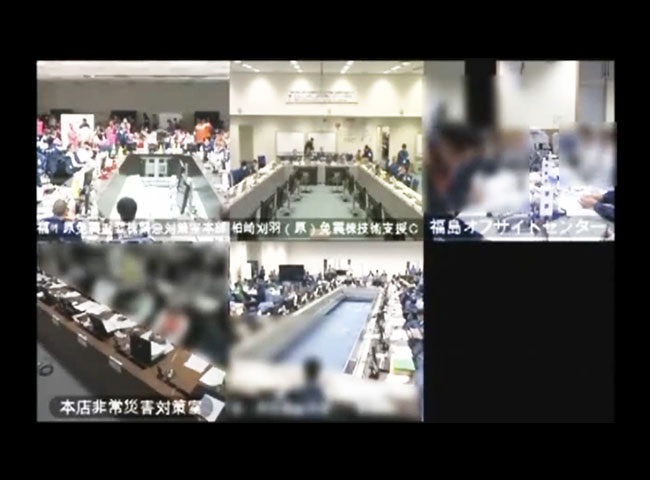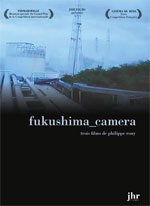Fovea Centralis
-
Réalisé par Philippe Rouy • Écrit par Philippe Rouy
-
France • 2014 • 50 minutes • Couleur
- Réalisation :
Philippe Rouy - Écriture :
Philippe Rouy - Son :
Philippe Rouy - Montage :
Philippe Rouy
- Production (structure) :
Philippe Rouy - Ayant droit :
Philippe Rouy
- N° ISAN :
non renseigné
Résumé
"Point focal de la rétine qui permet une vision nette mais dans un champ limité, la partie de l’œil qui donne son titre au troisième volet de la trilogie de Philippe Rouy sur les images de la catastrophe de Fukushima souligne la vision à la fois panoptique et parcellaire du found footage particulier qu’il retravaille. Il s’agit des visioconférences qui ont eu lieu dans l’entreprise exploitant la centrale de Fukushima dans les semaines qui ont suivi la catastrophe de mars 2011. Contrainte de rendre publics ces enregistrements, la société Tepco les a floutés en maints endroits et a censuré de nombreuses paroles. Les instructions techniques de masquage ("nivellement des contrastes, dilution des contours, désaturations") finissent par métaphoriser malgré elles l’indicible dénaturation qu’a produite l’explosion. Proche des remontages et détournements d’un Harun Farocki, Philippe Rouy fait revenir dans des images contraintes et tronquées d’insistantes présences fantomatiques. La musique de Julie Läderlach et Loïc Lachaise contribue à l’oscillation entre brouillard et opalescence qui caractérise autant la perte de vision progressive des irradiés que la description d’un ectoplasme par Pierre Curie dans une lettre où il s’avoue convaincu par une séance de spiritisme. Rêves, médiums, propagande : les torsions de la vision conspirent à une "évaporation de l’homme", selon le titre du film de Shohei Imamura qui, en 1967, questionnait à la fois le phénomène des disparitions volontaires dans la société japonaise et l’aveuglement du cinéma-vérité."
(Charlotte Garson)
"The focal point of the retina enabling great acuity of vision but within a limited field: this part of the eye provides the title of the third film in Philippe Rouy’s trilogy on the images of the Fukushima disaster. It also highlights the panoptic yet partial vision of the specific type of found footage he worked on—the recorded video- conferences held by the Fukushima power plant operator, Tepco, during the weeks following the March 2011 disaster. Forced to make these recordings public, Tepco blurred them in many places and cut out many words. The technical masking instructions (“toning down of contrasts, diluting contours, desaturation”) end up creating an unintended metaphor of the indescribably denaturing effects of the explosion. Close to the reedits and hijackings of a Harun Farocki film, Philippe Rouy brings back insistent ghostly presences into the constrained and truncated images. Julie Läderlach and Loïc Lachaise’s music highlights the oscillation between fogginess and the opalescence that characterises not only the gradual loss of vision of those exposed to radiation but also an ectoplasm that Pierre Curie describes in a letter, where he admits to believing in spiritism. Dreams, mediums, propaganda: the twisting of vision conspires with the vanishing of people as in the title of Shohei Imamura’s A Man Vanishes, which in 1967 questioned the phenomena of voluntary disappearances and the blinding effects of "cinéma-vérité"."
(Charlotte Garson)
Sélections et distinctions
- 2015 • Cinéma du réel • Paris (France) • Compétition Française
Comment avoir accès au film ?
- Édition DVD
-
Accès VOD
- Il n'existe pas d'accès en VOD à notre connaissance
- Diffusion non commerciale / Consultation


